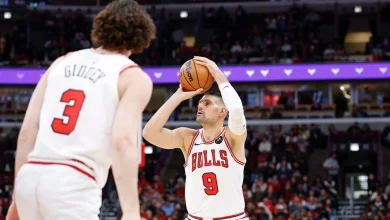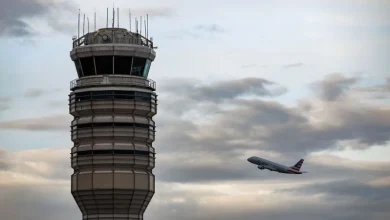Why Anthony Volpe’s shoulder surgery signals end of excuses on Yankees shortstop’s future

The New York Yankees will have a different starting shortstop on Opening Day in 2026 for the first time since Isiah Kiner-Falefa started at the position in 2022. Anthony Volpe, their starter for the past three years, is expected to be on the injured list when next season begins as he recovers from offseason labrum surgery.
Although there are reasons for optimism Volpe could emerge from the procedure an improved player, it’s no guarantee. The stakes — for Volpe and the Yankees — are sky high.
So, what could lie ahead medically for Volpe? For more context on his injury and recovery process, The Athletic interviewed Brian Schulz, an orthopedic surgeon at Cedars-Sinai Orthopaedics and the team physician for the Los Angeles Angels. Schulz has not treated Volpe nor seen his medical records but has experience treating similar injuries.
At last week’s end of season news conference, the Yankees announced Volpe had undergone surgery, and they outlined an initial timeline that could have him starting a rehab assignment in the minors around Opening Day.
Volpe originally injured his left shoulder diving for a ball on May 3. On that day, he reported hearing a “pop” in his shoulder. He missed one game at the time but was seen wearing bulky wraps around the shoulder for several weeks after the injury. Yankees manager Aaron Boone revealed in mid-September that Volpe played the majority of the season with a partially torn labrum, an injury that imaging in May determined was not new. The Yankees called the initial imaging “good news.”
Schulz said it’s common for baseball players to have labrum tears without recalling a serious shoulder injury. He said Volpe’s initial imaging likely didn’t show any bone bruising, which would have suggested he tore his labrum on the dive.
It’s also not surprising Volpe played the majority of the season with a partially torn labrum because the Yankees shortstop was not reporting any pain to the club’s medical staff. But his performance suffered greatly in 2025. Volpe had the worst season of his career, finishing with an 83 wRC+, 19 errors (tied for the American League lead) and a career-low 1.0 fWAR.
The Yankees could not agree whether Volpe’s shoulder injury impacted his performance. Boone said he didn’t think Volpe’s shoulder bothered him much, while general manager Brian Cashman believed the shoulder was a reason for the shortstop’s underperformance. To Schulz, there’s a key indicator that Volpe’s shoulder injury did contribute to his poor season: what happened after he received two separate cortisone shots.
Anthony Volpe warms up during the Wild Card Series. He had initial offensive spikes after receiving cortisone shots, but could not maintain the production. (Ishika Samant / Getty Images)
Volpe received his first cortisone shot during the All-Star break. In the first 13 games after the break, he posted a 1.086 OPS with seven home runs. Over the next 33 games, he had a .537 OPS with three home runs.
A cortisone shot is a powerful anti-inflammatory medicine that is injected into the area with the inflammation. After a couple of days, the shoulder, in Volpe’s case, becomes less inflamed. The cortisone lingers in the body for a couple of weeks until it wears off and starts feeling similarly to how it was before the injection.
Volpe received his second cortisone shot on Sept. 10. This time, Volpe had an eight-game stretch with a .923 OPS after he returned to the lineup. He followed that by finishing the season in a 7-for-40 slump with 20 strikeouts, including the postseason. Both times immediately after the cortisone injections, Volpe saw an initial positive spike.
“If he had two positive spikes when his shoulder is feeling good, maybe it was bothering him a little bit more than what he was leading on,” Schulz said. “It seems like if you had two good responses, that would make me think that this shoulder is affecting his performance because when he’s not feeling it as much, he’s playing better.”
Schulz said there’s no way of knowing with 100 percent certainty if Volpe’s shoulder was bothering him from May onward, but a telltale sign of the severity of the injury is that he opted for surgery instead of continuing to play through it. Because Volpe’s injured shoulder was his lead one when batting, Schulz said it could have affected the way he approached hitting, even on a subconscious level. A player could opt to change his swing or approach if he is experiencing pain or is concerned that what he is doing will lead to pain, Schulz said.
Volpe’s bat speed dropped from 72.8 mph in May to 71.7 mph in June, according to Statcast data. He closed off his stance 3 degrees in June compared to what he did in May. The horizontal angle at which the sweet spot of his bat travels through the zone increased 6 degrees, the biggest month-to-month jump of the season.
While it’s impossible to know if those changes were made to counteract what he might have been experiencing in his shoulder in the initial weeks following the injury, the data shows that he didn’t tinker with his swing and his approach more than he did in June. Volpe had a flatter swing and an approach in which he tried to go the opposite way more than any other month of the season.
“I think, for the overwhelming majority of the year, it was not affecting his play,” Boone said last week. “In some ways, the injury probably got a little bit worse towards the end of the year based on a couple of episodes that happened, but I don’t think it was impacting performance.”
Many fans wondered why Volpe didn’t have more cortisone injections since it seemed they were helping his performance. Schulz said the more cortisone injections a person receives, the more it can cause soft tissue damage. He said that the medicine turns off the body’s ability to know something is wrong, and if a person is receiving them over and over again, they could end up making their shoulder worse and not realize it until the medicine was out of their system.
Now that Volpe has undergone surgery, the Yankees hope this will no longer be an issue once he’s recovered. Volpe won’t be able to swing for four months and won’t be able to dive on his shoulder for six months. Schulz said it takes about three months for the tissue in the shoulder to heal and an additional four to eight weeks to get strong enough to be able to tolerate swinging and diving.
The most common setback with this surgery occurs when a player rushes back too quickly and re-injures their shoulder. Schulz said Volpe will likely feel ready to go well before the Yankees will let him begin rehabbing.
Overall, the doctor offered an optimistic outlook. He said “there’s a high probability” of Volpe returning to the player he was before the partially torn labrum.
But who that player is, before the injury, is an unknown. It’s unclear if Volpe was dealing with this injury in his first two big-league seasons, which have been underwhelming. Volpe starred in the minor leagues, but he has not come close to meeting his potential as a former No. 1 prospect in the organization’s system.
So the Yankees remain, essentially, still in a haze — not knowing what Volpe’s future in the majors will look like. When discussing Volpe last week, Boone and Cashman were less definitive about him being the starter when he’s fully healthy. They didn’t speak with full confidence, like they had every time they’d previously been asked about him. It’s likely José Caballero will be the Yankees’ starting shortstop on Opening Day, and they’ll reassess where they are when Volpe returns.
But one thing is clear, now that Volpe has undergone surgery to address an injury that could have been a key reason his performance dropped: There are no more excuses left.





